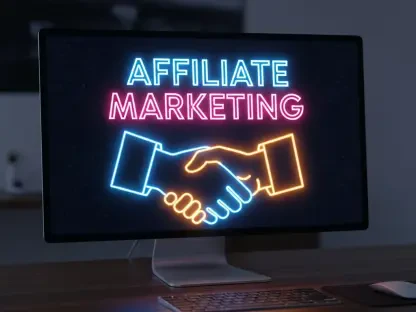Imagine a digital newsroom in 2025, buzzing with editors and developers racing to secure revenue through subscription models, only to find their content buried in search engine results due to technical oversights. This scenario underscores a pivotal challenge in digital publishing: balancing monetization with visibility. JavaScript paywalls, a widely adopted tool for restricting access to premium content, have emerged as both a lifeline and a hurdle for publishers. This review delves into the intricacies of optimizing these paywalls for search engine optimization (SEO), examining Google’s latest guidelines, their technical implications, and their impact on user experience and publisher strategies.
Understanding the Core of JavaScript Paywalls
JavaScript paywalls function as digital gatekeepers, limiting access to high-value content unless users pay for a subscription. Publishers across industries rely on this technology to sustain operations amid declining ad revenue. However, the very mechanism that protects revenue often clashes with search engine algorithms, as bots struggle to index content hidden behind these barriers, resulting in diminished organic traffic.
The conflict stems from the nature of JavaScript itself, which often requires client-side execution that Google’s crawlers may not fully process. This mismatch can lead to content being overlooked, directly affecting a site’s ranking on search result pages. As search engines prioritize accessible and user-friendly experiences, publishers face the daunting task of aligning monetization goals with technical compliance.
This tension has grown more pronounced with evolving algorithm updates that emphasize helpful content over restricted access. The stakes are high, as improper implementation risks not just lower visibility but also a potential loss of trust from both users and search engines, pushing publishers to rethink their approach to paywall deployment.
Google’s Guidelines and Technical Features
Structured Data as a Bridge to Visibility
Google’s updated recommendations provide a lifeline through structured data markup, a method to signal paywalled content to crawlers without granting full access. This markup allows snippets of content to be indexed, offering a glimpse to users while preserving the subscription model’s integrity. It represents a compromise, ensuring that search engines can still catalog essential information.
This approach mitigates the risk of complete invisibility in search results, aligning with broader goals of web accessibility. By marking content as subscription-based, publishers can maintain a presence in search listings, potentially drawing in curious readers who might convert to subscribers. The precision of this markup, however, demands meticulous attention to detail during implementation.
Adopting structured data also reflects Google’s push for transparency in digital ecosystems. Publishers who leverage this tool effectively can avoid penalties associated with cloaking or misleading indexing practices, fostering a more harmonious relationship with search engine protocols.
Implementation Strategies for Optimal Performance
Beyond markup, actionable strategies like soft paywalls play a crucial role in balancing visibility with revenue. These systems allow limited access—such as a few free articles per month—before prompting subscriptions, ensuring that some content remains discoverable. This method caters to casual readers while incentivizing deeper engagement.
Technical solutions, such as server-side rendering, further enhance performance by enabling bots to access content without relying on client-side scripts. This approach reduces indexing errors and ensures that search engines can evaluate a site’s full value, bolstering its standing in rankings. Speed and compatibility become critical factors in this setup.
Additionally, maintaining compliance with metrics like Core Web Vitals is essential. Paywall scripts that slow down page loading can negatively impact user experience scores, a key component of modern SEO. Publishers must prioritize lightweight, efficient code to prevent such setbacks, ensuring seamless interactions for both bots and human visitors.
Emerging Dynamics and User Behavior
The landscape of paywall technology continues to shift with innovations and challenges. AI-generated summaries in search results have begun to reduce organic clicks, as users often find answers without visiting the source site. This trend pressures publishers to create even more compelling content previews to drive traffic despite these summaries.
User behavior adds another layer of complexity, with tools like VPNs and browser extensions enabling some to bypass paywalls entirely. Such practices erode the effectiveness of subscription barriers, forcing publishers to adapt with more sophisticated detection mechanisms or alternative monetization models that don’t rely solely on hard restrictions.
These evolving dynamics highlight a broader shift in how content consumption is approached. As audiences grow savvier, the emphasis on delivering value through unique, high-quality material becomes paramount, pushing the technology behind paywalls to evolve in tandem with user expectations and search engine demands.
Industry Adoption and Real-World Impact
Across various sectors, from major news outlets to niche platforms, JavaScript paywalls have been integrated with varying degrees of success. Some publishers have mastered the art of optimization, using soft access models to retain search visibility while steadily growing subscriber bases, demonstrating the potential for harmony between revenue and reach.
Others, however, grapple with significant hurdles, such as sudden traffic drops after algorithm updates or user backlash against restrictive access. These challenges underscore the importance of adhering to best practices and staying agile in response to changing guidelines, as missteps can lead to long-term setbacks in audience trust and financial stability.
The broader implication for digital publishing lies in the sustainability of quality content. With traditional ad models faltering, paywalls remain a vital tool, yet their impact on inclusivity and discoverability sparks ongoing debates. The industry must navigate these waters carefully to ensure that monetization doesn’t come at the expense of accessibility.
Challenges in Technical Execution
One persistent obstacle is the inherent difficulty search bots face in executing JavaScript-heavy paywalls. When scripts fail to render properly for crawlers, entire sections of content may go unindexed, effectively rendering them invisible to potential readers searching for relevant material.
Page speed presents another critical issue, as bulky paywall implementations can drag down loading times, negatively affecting Core Web Vitals scores. Such performance lags not only harm SEO but also frustrate users, potentially driving them away from a site altogether, a risk publishers cannot afford in a competitive market.
Accessibility concerns further complicate the picture, as overly rigid paywalls may alienate segments of the audience, including those using assistive technologies or alternative browsing methods. Google’s emphasis on site authority and user satisfaction means that striking a balance between protection and openness remains a delicate, ongoing challenge.
Looking Ahead to Evolving Strategies
As technology advances, the integration of AI in search engines promises to reshape paywall SEO strategies over the coming years, from 2025 onward. Enhanced algorithms may better interpret paywalled content, but they could also intensify competition for user attention, requiring publishers to innovate continuously in how they present gated material.
Future developments in structured data usage hold potential for more seamless communication between sites and search engines, reducing friction in indexing processes. Additionally, user-friendly monetization models, such as microtransactions for individual articles, might emerge as viable alternatives to traditional subscription walls, offering flexibility to diverse audiences.
The long-term outlook for digital publishing hinges on finding equilibrium between safeguarding revenue and ensuring content remains discoverable. As search technologies grow more sophisticated, adaptability will define success, with publishers needing to anticipate shifts in both user behavior and algorithmic priorities to stay relevant.
Final Reflections and Next Steps
Reflecting on this evaluation, it becomes clear that Google’s guidelines offer a robust framework for navigating the complexities of JavaScript paywall SEO. The structured data recommendations and emphasis on performance metrics provide actionable paths that many publishers have adopted with measurable success.
Looking back, the real-world applications reveal a spectrum of outcomes, with some entities thriving through meticulous optimization while others stumble over technical pitfalls. These experiences underscore the necessity of precision in implementation and vigilance in monitoring search engine updates.
Moving forward, publishers should focus on integrating lightweight, bot-friendly technologies and exploring hybrid monetization approaches to maintain both revenue and reach. Investing in user experience enhancements and staying attuned to AI-driven search trends will be critical steps in ensuring that paywalls support, rather than hinder, long-term growth in the digital publishing arena.









